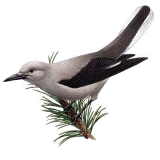Papers in the Biological Sciences
Document Type
Article
Date of this Version
1991
Abstract
The searching image hypothesis was originally proposed to account for the observation that animals selecting among disparate foods often consume an excess of the more common types. The hypothesis states that animals searching for a particular cryptic food item focus on visual features that are characteristic of that item, thereby facilitating its discrimination from the background. A change in stimulus discriminability is not, however, the only feasible explanation for the effect. One alternative is a simple change in response bias, an increased predisposition to respond to food-related stimuli. Another possible hypothesis derives from the fact that the amount of time that an animal has available for examining each stimulus is not fixed. This "caution" hypothesis attributes improvements in stimulus detection to changes in the amount of evidence that the animal acquires before making a response. To distinguish among these alternatives, we developed an accumulator model of visual search, which included discriminability, response bias, and caution as explicit, independent components. The consequences of varying each parameter in the model were evaluated by computer simulation, generating predicted effects of each hypothetical mechanism on response time and accuracy. The predictions were then tested using pigeons searching for images of natural, cryptic food grains. The results provide strong support for the discriminability hypothesis, but suggest that secondary changes in caution may also be involved.



Comments
Published in Ethology 87, 203-224 (1991). Copyright 1991 Paul Parey Scientific Publishers, Berlin and Hamburg.